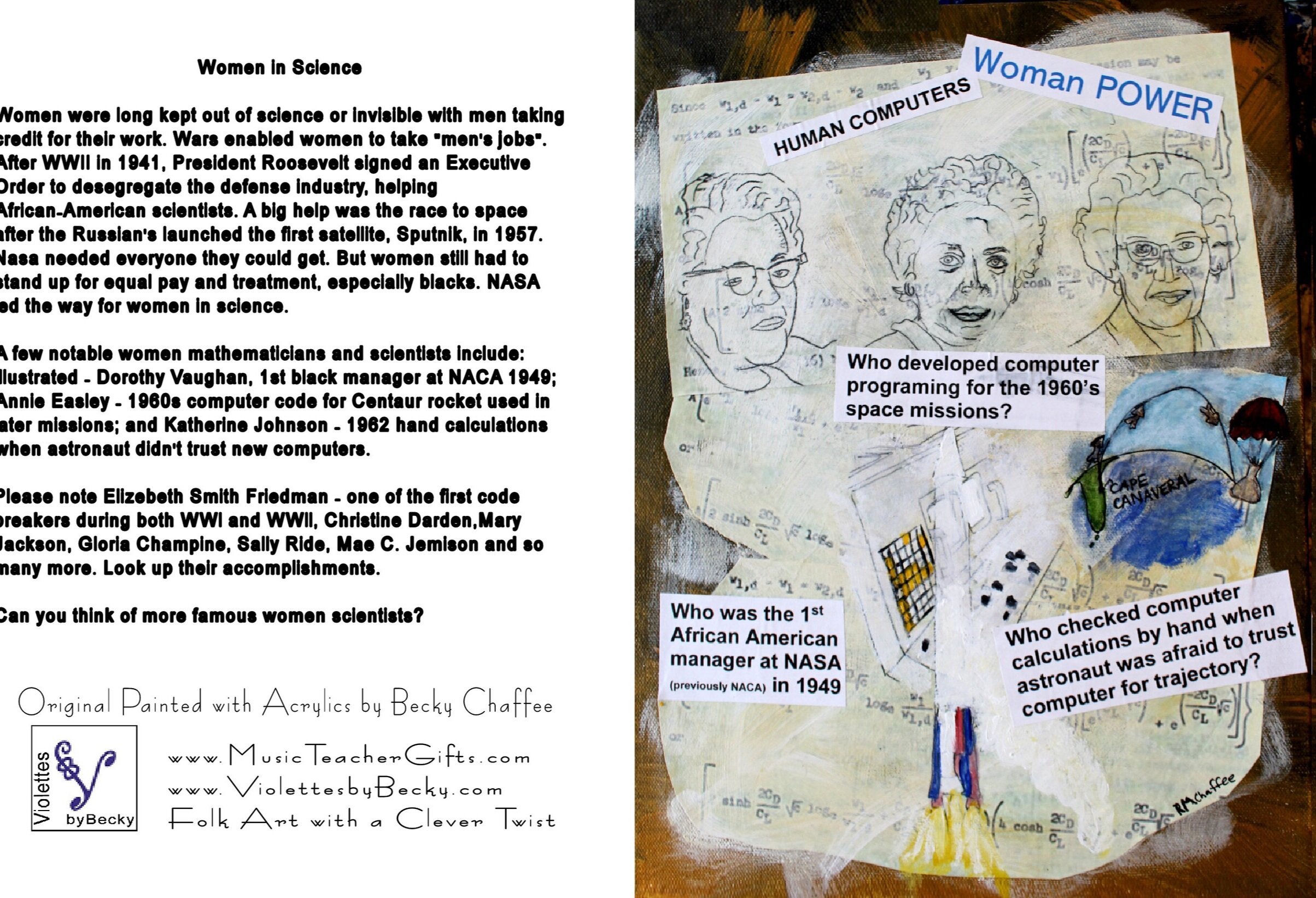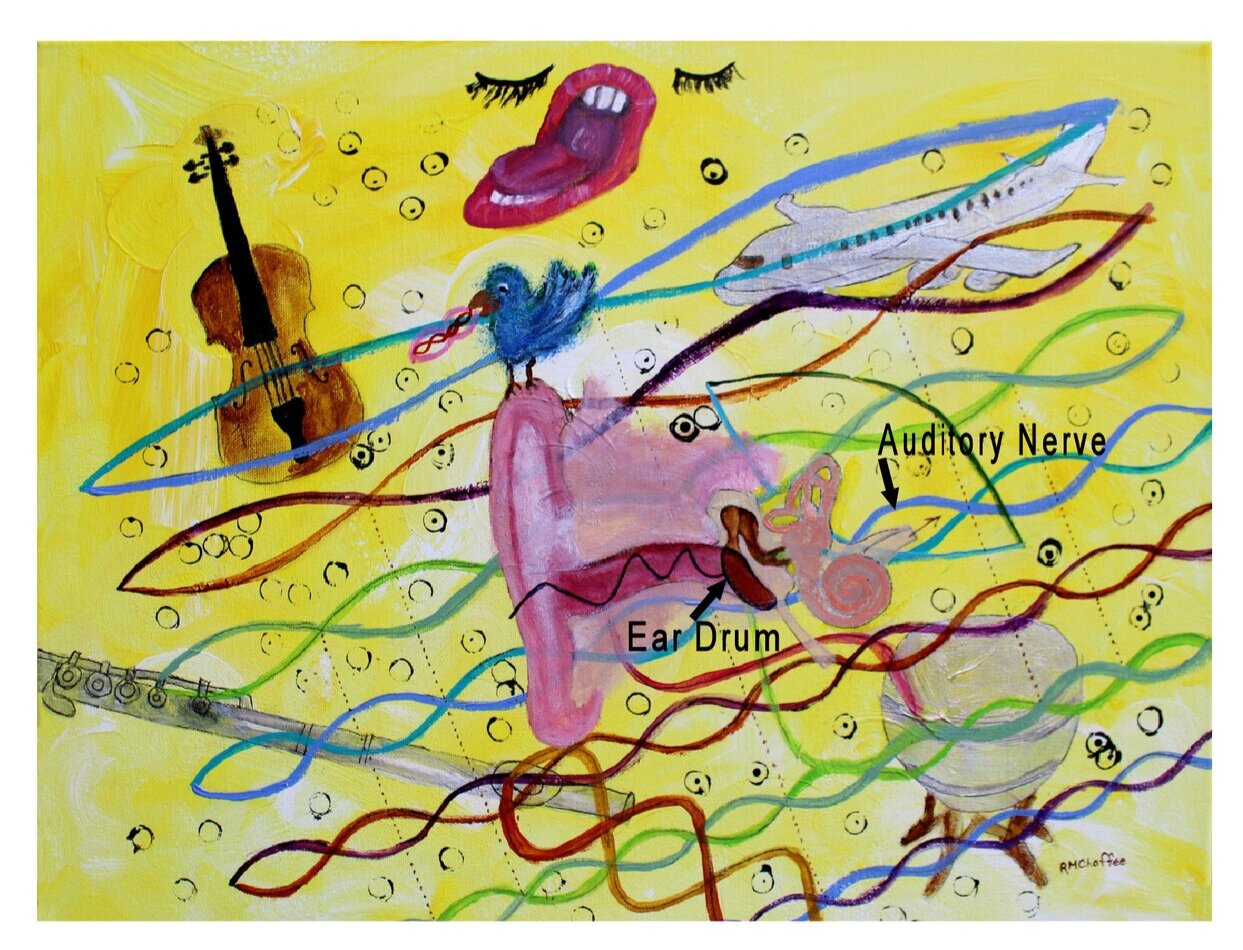Lunchbox Science Note Cards - Individual or Variety Set of 8
Each card comes as individual or set of 6 of same or variety pack of Eight 4 by 6 Note Cards with envelopes.
Subjects cover:
Reflection, Refraction and Dispersion
Teosinte Grass, Ancestor of Corn
Fresnel Lense
Energy Sources
Uses of Electricity
Sound
Women in Science
Uses of Harmonics
Scroll down to see complete info on back of each card.
LS1.0 Reflection, Refraction and Dispersion
“ Reflection, Refraction and Diffusion or Should There Be a Rainbow in This Picture"
Reflection, refraction and dispersion of light in water droplets cause a rainbow.
Refraction: the bending of light when (light) wave passes from one medium to another such as from air to water.
Reflection: when light bounces off an object (like the side of a water droplet or a pond or a mirror).
Dispersion: When light is bent, each color in the light has a different wave length that bends at different angles breaking the light into colors like a rainbow.
LS2.0 Teosinte Grass, Ancestor of Corn
Our neighbors in Central America genetically altered the best teosinte grass from Central Balsas River Valley into Maize or Corn 9,000 years ago. (discovery by Beadle).
Teosinte plants are full of branches and the kernals are very hard. Farmers planted only softest plants with least branches. Softness and Branching genes are REGULATORY genes, which when altered affect changes in many other genes.
Minute ground corn fossils were found in river rocks in a Balsas River Valley cave. Charcoal from a fire pit in the soil layer with the corn grinding rocks were carbon dated.
Today more productive corn growing taller is used for livestock feed, ethanol, sweet "eating" corn and 100's of food products (ground and in the form of corn starch and corn syrup).
LS3.0 Fresnel Lense
The Fresnel lens was Invented for the Lighthouse. How is it used today?
Split Rock Lighthouse was built in Minnesota on Lake Superior after a 1905 storm lost 29 ships. A midsize glass Fresnel lens approx. 5.2 ft in height (originally developed by French Physicist in 1822) was installed. Becky's painting shows an enlarged cross-section of the lens. The stair step design refracts and reflects the light to focus the beam for 22 miles. This design allows a much smaller and lighter lens than would otherwise be needed if it was standard convex.
Today, plastic Fresnel lenses are even lighter and used as a book page magnifier, or to concentrate heat in a solar oven, a solar water heater and even a solar powered steam engine.
LS4.0 - Energy Sources for Electricity: Renewable or Not?
Coal, Petroleum and Gas ,Hydroelectric and Nuclear, Solar, Wind and Geothermal When and how were each of these energy sources first used? Just a few of the scientists who contributed bringing electricity into the home: Thomas Edison: Developed Light Bulb and Power Station using coal power, lit up first houses with DC current in 1882. Nikola Tesla: invented AC Current induction Motor and related AC current patents in 1880s. George Westinghouse: In 1880's, he purchased Tesla's AC patent and and hired engineers to develop Electric Power distribution with transformers. In 1891, he built Hydroelectric power plant for electricity distribution to a mine.
Look thru Fresnel or magnifer lens to see largest power plants in world and output per year.
LS5.0 uses of Electricity
Uses of Electricity other than light and household items:
In this illustration, the car is being painted electrostatically. The paint is charged as it leaves the paint gun, and the metal car is charged oppositely. So the paint particles repel each other, being of like charges and are attracted to the car in an even distribution.
Other similar uses include a copy machine, plating silverware and jewelry.
Electricity runs thru our bodies, making our hearts beat and sending signals to the brain and is used in medicine such as the electrocardiogram and pacemaker. Electricity is used for communication - telegraph, telephone, radio, television and computer. Electric Motors power pumps to bring water to our homes for sinks, showers and toilets.
LS6.0 Women in Science
Women were long kept out of science or invisible with men taking credit for their work. Wars enabled women to take "men's jobs". After WWII in 1941, President Roosevelt signed an Executive Order to desegregate the defense industry, helping African-American scientists. A big help was the race to space after the Russian's launched the first satellite, Sputnik, in 1957. Nasa needed everyone they could get. But women still had to stand up for equal pay and treatment, especially blacks. NASA led the way for women in science.
A few notable women mathematicians and scientists include: Illustrated - Dorothy Vaughan, 1st black manager at NACA 1949; Annie Easley - 1960s computer code for Centaur rocket used in later missions; and Katherine Johnson - 1962 hand calculations when astronaut didn't trust new computers.
Please note Elizebeth Smith Friedman - one of the first code breakers during both WWl and WWll, Christine Darden,Mary Jackson, Gloria Champine, Sally Ride, Mae C. Jemison and so many more. Look up their accomplishments.
Can you think of more famous women scientists?
LS 7.0 Sound
When something causes vibration of molecules in the air (or water or gas), such as a violin string or blowing air into a flute, beating on a drum, vocal chords, a jet... molecules are set in a back and forth wave motion that propagates energy. when that reaches your ear, the ear drum sets the middle ear bones (anvil, hammer and stirrup) into motion, transmitting the vibrations thru the cochlea to small hairlike nerve cells. The cells send the vibrations as electrical impulses thru the auditory nerve to the brain.
The vibration wave goes back and forth and is measured by frequency or how many vibrations per second called Hertz. Each Hertz is associated with a pitch. Middle C on the piano is 261.6 Hertz.
Humans can hear from 20 to 20,000 Hertz.
Dogs - 50 to 45,000 Hz
Cats - up to 85,000 Hz; bats - 120,000 Hz.; Bats 200,000 Hz. Elephants can hear as low as low as 5,000 HZ, but only as high as 10,000 Hz.
LS8.0 Uses of Harmonics
Harmonics refers to repetative sinusoidal waves. A complete wave travels a full "back and forth" cycle. It is useful for electrical, bridge, ultrasonic and radio design. In music, the first harmonic is obtained by plucking an open string or blowing a wind or brass instrument. On a stringed instrument, pluck to vibrate the open string, then lightly touch the point exactly half way across the string to hear the second harmonic, a tone an octave above. Do the same on a point 1/3 or 2/3 the string length to hear another 5th higher, 3rd harmonic. The 4rth harmonic is 2 octaves above the string. For a wind or brass instrument, overblowing will sound the harmonics.
For a string, the waves are transverse (the direction the string travels). For winds/brass, the wave is longitudinal, along the length of the instrument. (This is harder to understand).
Can you figure out how to sound harmonics on the piano?
How do you think science and engineering fields make use of Harmonic waves?








